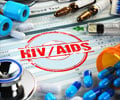Health experts have called for focusing the HIV prevention in India towards high-risk groups such as sex workers after the global estimate of HIV/AIDS
Health experts have called for focusing the HIV prevention in India towards high-risk groups such as sex workers after the global estimate of HIV/AIDS was revised in the 2007 UNAIDS/WHO AIDS epidemic update.
This revision is because of the major reduction of the estimate for India, which has been set at 2.5 million people living with HIV/AIDS - less than half of the previous official estimate of 5.7 million people.
It is based on a new population-based data from the National Family Health Survey in India.
The health research experts at The George Institute India explained in a commentary published in the Lancet on World AIDS Day, the basis of this drop and the implications for future planning of HIV/AIDS control in India.
The author of the commentary was Professor Lalit Dandona, Senior Director of The George Institute India and Chair of International Public Health at The University of Sydney School of Public Health.
“The data from the recent National Family Health Survey support the findings from similar studies we conducted in southern India, where we showed that the previously used official method for estimation of HIV burden in India was in fact not valid, and led to a 2•5 times higher estimate than what is actually the case,” Lancet, quoted him as saying.
Professor Dandona explained that well-designed scientific population-based surveys offer a far more dependable representation of HIV in India, as compared to the official method used so far, which inferred data directly from large public-sector hospitals to the population.
“The official method overestimated the burden of HIV in India as the profile of patients visiting large public-sector hospitals is quite different from the population at large, in terms of disease distribution including HIV,” he said.
He believes that the new and much reduced HIV estimate for India has several implications.
“We can now see that the official method for annual estimation of HIV prevalence in India needs revision. The new figures show the projected number of people needing HIV treatment over the next decade, and the associated resources needed, will be less than previously anticipated,” he said.
Professor Dandona said that the new HIV estimate for India significantly indicates that HIV rates as seen in sub-Saharan Africa will not occur in India.
Efforts for HIV prevention in India should therefore be aimed directly towards high-risk groups, such as sex workers, men who have sex with men, mobile populations (migrant labourers and truckers), people with other sexually transmitted infections, and injection drug users.
However, other areas of focus should include counselling, testing, prevention of transmission from mother to child, and blood-transfusion safety.
Also, Professor Dandona said that it is vital that the public-health approach for HIV control in India becomes more scientific.
“The establishment of a reliable estimate of HIV burden in India is only an initial step, what’s needed now is more scientific effort to understand the dynamics of HIV spread in India and the impact of interventions on HIV control in India,” he said.
Source-ANILIN/P











